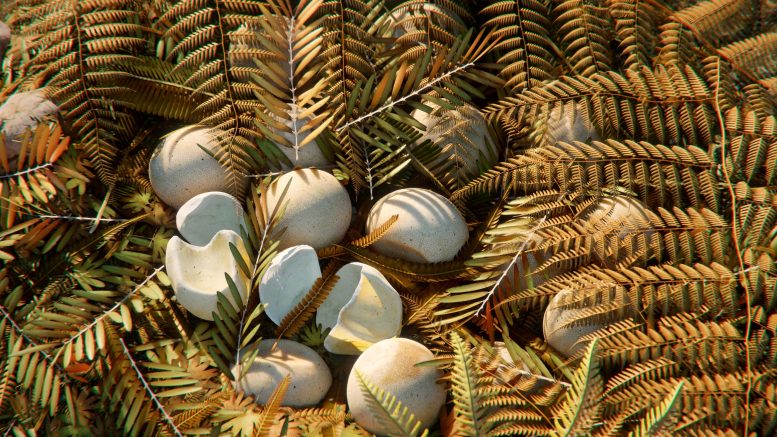
The discovery of Qianlong shouhu, a new dinosaur species, has led to the revelation that the first dinosaur eggs were likely leathery. This contributes significantly to our understanding of dinosaur reproductive evolution and the ancestral state of reptilian eggshells. (Reconstruction of egg nests containing fossilized embryos.) Credit: NICE Vistudio
A recent study on the newly discovered Qianlong shouhu, an early Jurassic sauropodomorph, suggests that the earliest dinosaur eggs had leathery shells. This finding, derived from comprehensive analyses of dinosaur fossils, indicates significant evolutionary changes in dinosaur egg morphology. The study also contributes to our understanding of the ancestral reproductive traits of various reptilian clades.
Dinosaur Reproductive Biology
The discovery of several exceptionally preserved reproduction-related dinosaur specimens over the last three decades has improved our knowledge of dinosaur reproductive biology. Nevertheless, due to limited fossil evidence and a lack of quantitative analysis on a broad phylogenetic scale, much about dinosaur reproduction remained unclear, especially pre-Cretaceous evolutionary history.
Breakthrough in Egg Morphology Research
Now, however, a recent fossil discovery by researchers from the Institute of Vertebrate Paleontology and Paleoanthropology (IVPP) of the Chinese Academy of Sciences (CAS), as well as associated analyses, suggests that the first dinosaur egg was leathery, and the major transition in egg morphology occurred early in the evolution of theropod dinosaurs rather than near the origin of birds.
Discovery of Qianlong Shouhu
The study, which was recently published in the National Science Review, reports the discovery of specimens of a new early Jurassic early-diverged sauropodomorph dinosaur species in Guizhou, China—Qianlong shouhu—comprising three skeletons from adult individuals and five egg clutches. This discovery may represent the earliest fossil record of the association between adult dinosaurs and nests, and the species name reflects this association: Qianlong means “Guizhou dragon,” while shouhu means “guarding”—a reference to the preservation of adult skeletal fossils in association with embryo-containing egg fossils.
Qianlong was a medium-sized basal sauropodomorph dinosaur that weighed one ton and was about six meters (20 feet) long. The embryos display some differences from the adults, e.g., a proportionally longer skull, a more vertical anterior margin of the snout, and fewer teeth.
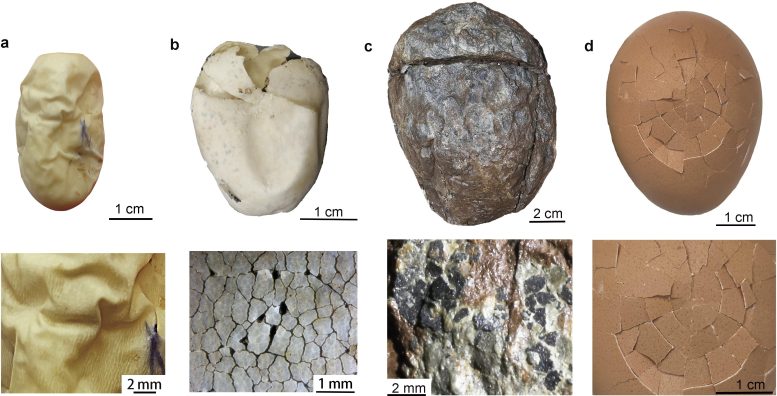
Comparison of fossil eggs (c) with existing soft-shelled, leathery, and hard-shelled eggs. Credit: IVPP
Insights into Qianlong Behavior and Anatomy
Allometric analyses of limb ratios between the adult and embryonic specimens indicate that adult Qianlong was able to walk on its hindlimbs, but the babies were likely quadrupedal. The general taphonomical and sedimentary features indicate that Qianlong might have practiced colonial nesting as a reproductive behavior, similar to other basal sauropodomorphs including Massospondylus and Mussaurus.
The researchers also examined the eggshell microstructure of Qianlong using multiple techniques, including histological thin-sectioning, electron backscatter diffraction, energy-dispersive spectroscopy, and scanning electron microscopy. The results showed that Qianlong possessed eggshell microstructures similar to other Cretaceous dinosaur egg fossils, which likely consisted of two layers—the mammillary layer and continuous layer—and had fully developed eggshell units. The calcareous layer of Qianlong eggs was much thicker than that of most soft-shelled eggs but thinner than that of hard-shelled eggs. The comparison of eggshell fragmentation among different eggshell types also suggests that the eggshell surface of Qianlong featured small fragments, similar to a leathery eggshell, in contrast with the folded surface of soft-shelled eggs or the large-fragmented surface of hard-shelled eggs. These observations indicate that Qianlong laid leathery eggs.
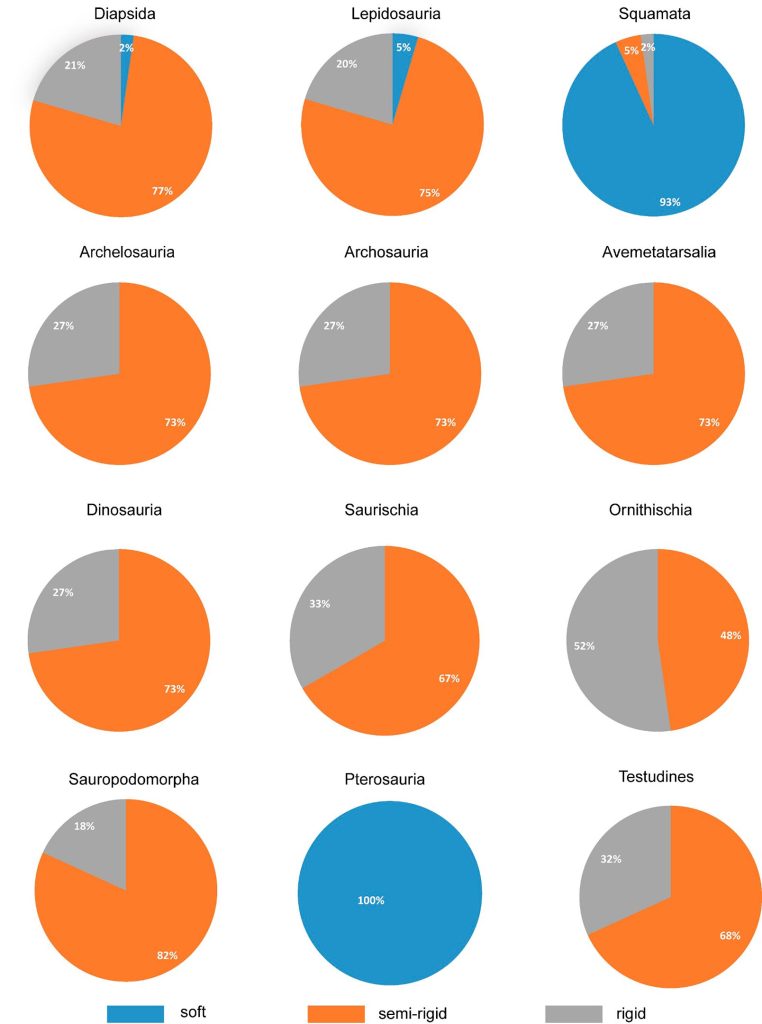
Summary of ancestral eggshell type for major nodes with the maximum posterior probabilities in all ASR analyses. Credit: IVPP
Evolutionary Trends in Dinosaur Eggs
In order to test the macroevolutionary patterns of selected reproductive traits across the dinosaur–bird transition, the researchers assembled data from 210 fossil and extant species representing all major reptilian clades and tested evolutionary trends using multiple time-scaled phylogenies.
They found that relative egg size decreased from the base of the Diapsida to that of the Saurischia but displayed an increasing trend from early theropods to the crown bird node. The most significant egg-size increase occurred early in theropod evolution. In terms of eggshell thickness, they discovered that thickness tended to decrease from the base of the archosaur to the base of the Saurischia, followed by a significant increase in eggshell thickness early in theropod evolution. An increasing trend in eggshell thickness also occurred in sauropodomorph evolution.
Egg shape was generally conserved in the evolution of diapsids to living birds. For example, although theropod egg elongation reached its peak in oviraptorosaurs—with the greatest egg elongation among diapsids—it would later return to its ancestral state. As a result, only slightly elongated eggs were inherited by all crown bird clades.
All in all, reconstruction of the ancestral state of various eggshell types supports the conclusion that the first dinosaur egg was probably leathery, relatively small, and elliptical. Furthermore, a leathery eggshell was probably the ancestral state of Avemetatarsalia, Archosauria, and Testudines.
Reference: “Exceptional Early Jurassic fossils with leathery eggs shed light on dinosaur reproductive biology” by Fenglu Han, Yilun Yu, Shukang Zhang, Rong Zeng, Xinjin Wang, Huiyang Cai, Tianzhuang Wu, Yingfeng Wen, Sifu Cai, Chun Li, Rui Wu, Qi Zhao and Xing Xu, 9 October 2023, National Science Review.
DOI: 10.1093/nsr/nwad258

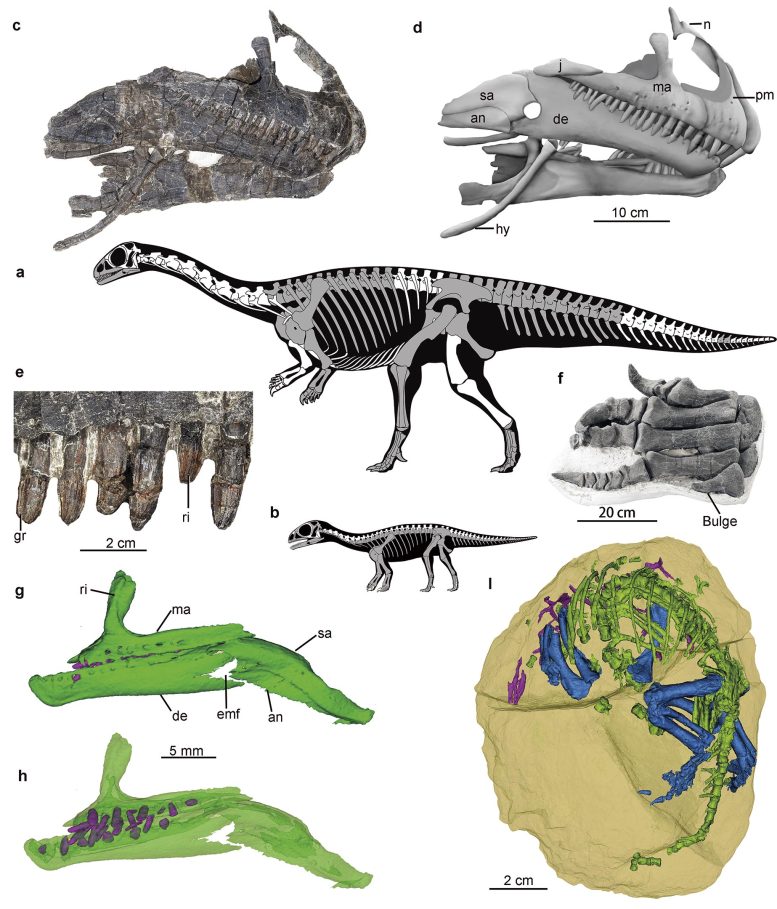
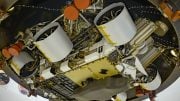
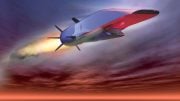
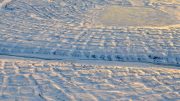
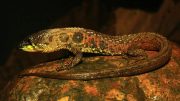
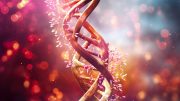
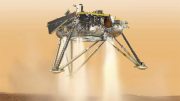


Modern crocodilian still has grasping finger claws from its spinosauridae ancestor it’s raptorial claws I thought they mean bird of prey but Wikipedia has right answer its for grasping animal. hind feet toe claws its like land animal like most theropod I know spinosauridae claws are like gator from suny orange website some theropod even more less curve than spinosauridae these are land animal this is from palaeo electronica website .less curve mean flatten claws
I read some claws report and saw some picture it’s theropod finger and toe for the gator reptile blog say the same thing .why are gator not link to lizard tuatara amphibian because it’s a dinosaur the pseudosuchus quadrupedal dinosaur lost grasping finger but found in ornithosuchus and pterosaur mite be more .some do not have it .some scientist cliam modern crocodilian is primitive and old news they have dinosaur grasping claws why are all claws not land claws .?
This on swimming report for spinosaurus palaeo electronica.i know gator has grasping finger by what I saw on the picture the big thumb claw like predator theropod I can not believe it’s there I read walking evolution report before and saw finger of gator in quadrupedal fashion the first finger are reduce look like human finger.i did not know function of these claws clearly the gator is most advance dinosaur spinosauridae live,!
On gator finger it’s missing a bone the phalanx 4,5, finger they did not grow these bone and they have 2 new muscle the finger are not use for walking only for standing these finger 4,5, are in air when walking and running it lack tendon only could walking running on tetanuran finger these muscle finger are not found in any reptile they have no link amphibian or very primitive reptile tuatara they walking have no link to mammal allso has tuatara ancestor mostly quadrupedal this is old news report.allso weight on leg is different in gator and mammal I forgot which leg the gator is bipedal so hind leg I did this report long time ago not on this website
This is on .the crocodilian and wrist biomechanic.they call modern crocodilian primitive what are they teaching in school.on crocodilian lack of carpal element they cliam they do not know gator is fully bipedal.the gator allso have this advance feature found in mammal antebrachiocarpal joint a very quadrupedal feature for mammal high walk so carpal has to be elongated it’s also bipedal feature in dinosaur but dinosaur finger is not that mobile the gator finger very mobile because of the joint the pseudosuchus dinosaur allso has long carpal not mobile
It’s crocoformies feature so protosuchus is crocoformies if you do not use science only thecodont in there all the rest is mesoeucrocodylia say only mesoeucrocodylia there are no links between spinosauridae and protosuchus they have different evolution origin so antebrachiocarpal only for mesoeucrocodylia.this is on the pterosaur heresies long carpal in crocodylomorphy.allso gator lack carpal this is eusuchian mesoeucrocodylia feature this is because speedy monster centra joint
On the links picture it’s amazing how modern crocodilian finger look like predator theropod dinosaur finger. why are pterosaur and gator finger claws never change I wonder itstoo much bipedalism .the long carpal they think gator came from bipedal ancestor as primitive none dinosaur line because long carpal is found in dinosaur because pseudosuchus dinosaur has big arm that it was quadrupedal and long carpal has nothing to do with quadrupedalism .there is new species desert dwarf crocodile I never herd about this they are very small there is debate about this like desert Nile crocodile.
In alligator the antebrachiocarpal joint is different the usa gator broad snout caiman